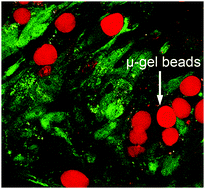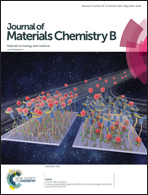Standardized microgel beads as elastic cell mechanical probes†
Abstract
Cell mechanical measurements are gaining increasing interest in biological and biomedical studies. However, there are no standardized calibration particles available that permit the cross-comparison of different measurement techniques operating at different stresses and time-scales. Here we present the rational design, production, and comprehensive characterization of poly-acrylamide (PAAm) microgel beads mimicking size and overall mechanics of biological cells. We produced mono-disperse beads at rates of 20–60 kHz by means of a microfluidic droplet generator, where the pre-gel composition was adjusted to tune the beads’ elasticity in the range of cell and tissue relevant mechanical properties. We verified bead homogeneity by optical diffraction tomography and Brillouin microscopy. Consistent elastic behavior of microgel beads at different shear rates was confirmed by AFM-enabled nanoindentation and real-time deformability cytometry (RT-DC). The remaining inherent variability in elastic modulus was rationalized using polymer theory and effectively reduced by sorting based on forward-scattering using conventional flow cytometry. Our results show that PAAm microgel beads can be standardized as mechanical probes, to serve not only for validation and calibration of cell mechanical measurements, but also as cell-scale stress sensors.



 Please wait while we load your content...
Please wait while we load your content...